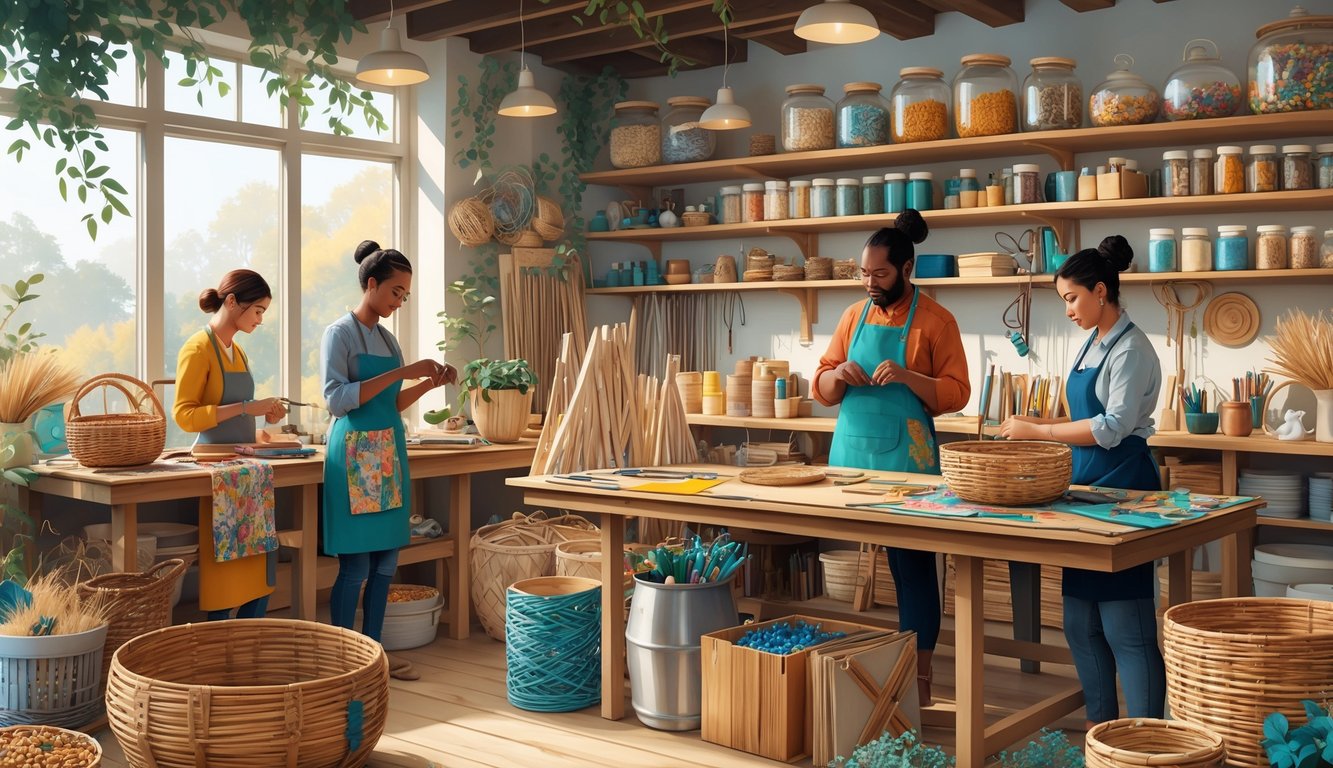
Tools That Make a Difference During Shortages

When half your regular supplies vanish, suddenly the tools you usually ignore become VIPs. Old favorites start feeling like secret weapons, and I dig up pliers I forgot existed—always at the exact wrong time, but whatever.
Versatile Hand Tools
Ever look at your drawer and think, why do I own three utility knives? I wasn’t planning to stab a faux-leather scrap with an awl, but the hole punch vanished and—well, the awl’s close enough. I use screwdrivers for everything except screws. Paint cans, stubborn beads, prying open mystery boxes. During shortages, every tool’s a multi-tool, even if it shouldn’t be.
My lists are a mess—half the items get crossed out, turns out you don’t need a fancy box cutter if you’ve got decent shears. One day I used a bone folder to smooth clay, which, yeah, it’s ruined now. Whatever, it worked.
| Tool | Stand-In Use |
|---|---|
| Screwdriver | Pry, poke, mash |
| Utility scissors | Cut, strip, even light scoring |
| Bone folder | Smooth, crease, press |
| Awl | Punch, scribe, mini chiseling |
I try to keep things organized. Honestly, I just lose pencils and get surprised by what turns up.
Must-Have Pliers for Substitution Projects
If I had a nickel for every time I grabbed chain nose pliers when I needed round nose—never mind. Substituting tools is always a mess, but when supplies dry up, I just grab whatever’s close. My long nose pliers? They end up in jewelry work they weren’t built for. They’re awkward, but if you go slow, they’ll curl wire. Kinda.
Ever use flat nose pliers to crimp? Not just bend. It’s a pain, but you wiggle, you work around the marks. I’ve wrapped wire loops for earrings with these tiny pliers from a garage sale, thinking I’d never use them. Shows what I know.
A neighbor uses electrical pliers to bend jump rings. She loves it. My hands hate it. There’s probably some chart for “acceptable substitutions,” but I don’t care. If it doesn’t break, it’s fine.
Sourcing and Shopping for Alternative Materials
Scrolling, scrolling, and suddenly you’re crossing the street for felt, but end up with neoprene scraps, cut-up leather from a couch, and a bag of old zippers. Shortages just dump options in your lap. You end up digging through weird channels, and now you’re holding glow-in-the-dark beads that were probably meant for fishing.
Online Marketplaces
Etsy, eBay, Facebook Marketplace—plus those random craft swaps in Discord servers. I burn hours hunting for something specific, then just buy a “mixed fabric offcuts” bag because, who knows, there might be wool. Every listing is a gamble. Once bought from a retired prop guy in Ontario—his store policies were literally just photos of handwritten rules. Why?
Bulk lots or curated kits? I don’t know which is worse. Sorting is chaos. Tables like this don’t help but here:
| Material | Usual Source | Alternative Found |
|---|---|---|
| Cotton Jersey Knit | Fabric Chains | Upcycled T-shirts |
| Metal Snaps | Craft Supply | Old Button Stashes |
| Acrylic Sheets | Home Depot | Estate Sale Finds |
Amazon’s “craft supply lots” sometimes mean two pounds of tangled thread and three half-made dolls. Don’t order at 2 a.m. unless you like surprises.
Supporting Local and Small-Scale Suppliers
You drive across town to a pop-up craft fair, or, like last week, I wandered into a flower shop-slash-weaving supply place (smelled like lavender, but why is there sawdust in the yarn bins?). Local hardware stores? They know a guy who knows a guy repurposing pallets for wood blanks.
Some crafters just barter—neighbor swaps slow-cured beeswax for glass beads from a lady selling out of a toolbox. No listings, just handwritten tags and a plastic tackle box. Flea markets? Someone sold twill tape next to a pile of 1990s VHS tapes, because why not.
Small shops run out fast. Some guy told me he gets dye from discontinued grocery stock—no way to predict colors. I wanted blue, got neon orange. The trick is just knowing who’s moving or retiring so you can maybe grab their garage stash.



